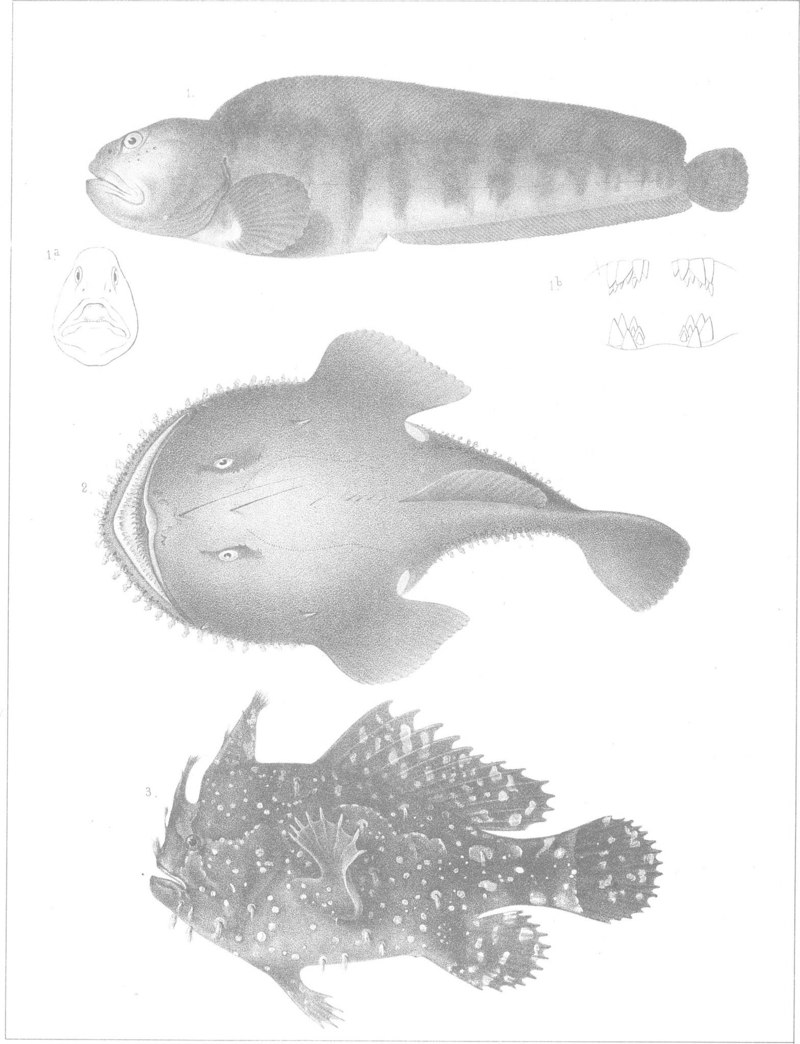|
| Query: sea cat | Result: 179th of 202 | |
Atlantic wolffish (Anarhichas lupus), American anglerfish (Lophius americanus), Sargassum fish (Histrio histrio)
| Subject: | Atlantic wolffish (Anarhichas lupus), American anglerfish (Lophius americanus), Sargassum fish (Histrio histrio)
| | Poster: | Wiki Photos (---@---.---)
| |

| Resolution: 1569x2048
File Size: 547922 Bytes
Upload Date: 2022:09:28 09:56:21
|
1. Anarrhicus vomerinus = Atlantic wolffish (Anarhichas lupus)
2. Lophius americanus = American anglerfish
3. Chironectes laevigatus = Sargassum fish (Histrio histrio)
Title: A history of the fishes of Massachusetts
Year: 1867 (1860s)
Authors: David Humphreys Storer, 1804-1891
Source book page: https://archive.org/stream/CUbiodiversity1130571/#page/n309/mode/1up
Source: https://commons.wikimedia.org/wiki/File%3AA_history_of_the_fishes_of_Massachusetts_%281867%29_%2820621453560%29.jpg
1. Anarrhicus vomerinus = Atlantic wolffish (Anarhichas lupus)
The Atlantic wolffish (Anarhichas lupus), also known as the seawolf, Atlantic catfish, ocean catfish, devil fish, wolf eel (the common name for its Pacific relative), woof or sea cat, is a marine fish of the wolffish family Anarhichadidae, native to the North Atlantic Ocean.
2. Lophius americanus = American anglerfish
Lophius americanus is a goosefish in the family Lophiidae, also called all-mouth, American anglerfish, bellows-fish, devil-fish, headfish, molligut, satchel-mouth, or wide-gape. It is native to the eastern coast of North America.
3. Chironectes laevigatus = Sargassum fish (Histrio histrio)
The sargassum fish, anglerfish, or frog fish (Histrio histrio) is a frogfish of the family Antennariidae, the only species in its genus. It lives among Sargassum seaweed which floats in subtropical oceans. |
^o^
Animal Pictures Archive for smart phones
^o^
|
|